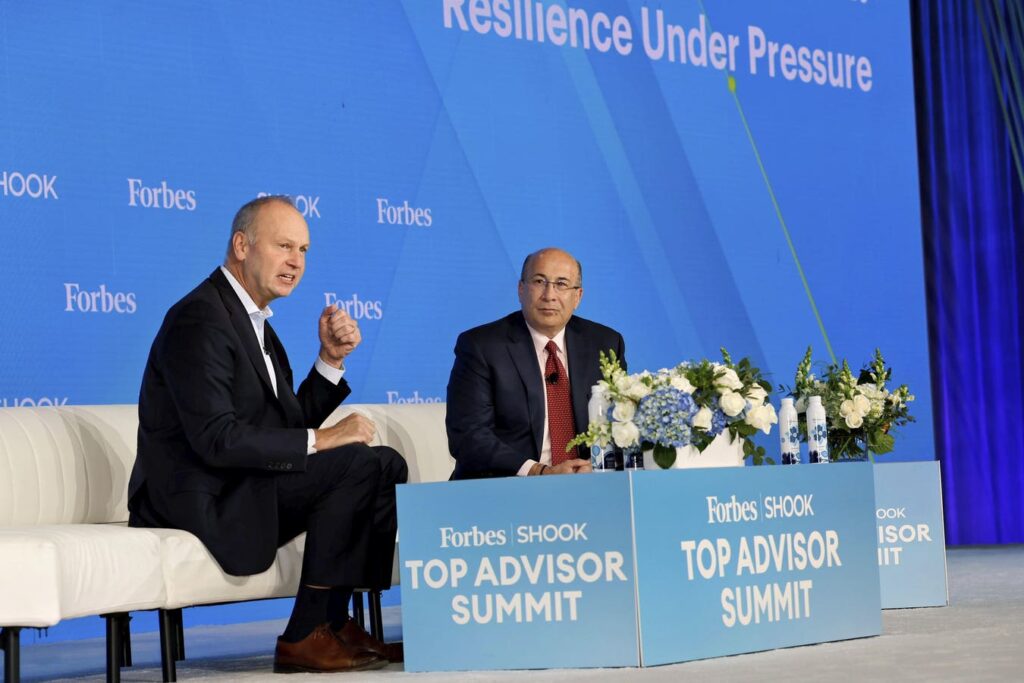Michael Arone, the chief investment strategist at State Street Global Advisors, believes that the Federal Reserve has effectively achieved a soft landing for the economy, a sentiment that underpins his optimism regarding the market rally anticipated to continue into 2025. This perspective comes in light of the S&P 500 index, which has surged over 23% this year and has recorded more than 40 new highs in 2024 alone. The index’s impressive performance over the past two years—nearly doubling—has been fueled by robust economic indicators and solid corporate earnings. The recent decision by the Federal Reserve to lower interest rates has also alleviated concerns about a potential recession, providing further support for market confidence and expansion.
Arone posits that the soft landing has already been realized, citing positive trends in inflation and corporate earnings. He anticipates that corporate profit margins will reach unprecedented levels in the coming year, with S&P 500 earnings growth nearing 15% and profit margins exceeding 13%. This projected increase is likely to be further bolstered by the Fed’s ongoing interest rate cuts, which Arone believes will stimulate new capital formation, thus propelling the current bull market. While historical bull markets have tended to last an average of seven years—of which the current one has just entered its third year—Arone’s bullish outlook suggests that this market cycle could extend for an additional five years, following the pattern observed after previous soft landings.
Looking ahead, Arone predicts that the Federal Reserve will continue to cut rates, stating that a 25 basis point reduction at the next meeting in November is likely, with another cut in December also possible. He points out that the financial system has remained resilient despite the rate hikes over recent years, attributing this stability to extensive fiscal measures during the pandemic and prolonged low interest rates that allowed businesses to secure favorable long-term financing conditions. Arone highlights four significant market tailwinds—lower tax rates, decreasing interest rates, globalization, and technology advancements, particularly in artificial intelligence—although he warns that these factors may soon transition into headwinds.
In terms of portfolio strategy, Arone recommends that investors maintain an overweight position in U.S. stocks, encompassing both large-cap and small-cap equities, in light of the favorable economic landscape. He expresses particular enthusiasm for sectors such as financials, which have become more appealing with a normalized yield curve, and communication services, where earnings growth is solid without being overly valued. Arone expects a significant shift away from the “Mag 7” stocks—comprising well-known tech giants—into small-cap companies as ongoing monetary easing by the Fed takes shape. He suggests that these small-cap stocks, which closely correlate with interest rates, are poised for better performance going forward.
While acknowledging that bonds can provide income and diversification, Arone advises caution as they have not effectively hedged against inflation. He advocates gradually moving investment from money market funds to short- and medium-duration bonds, as well as considering investment-grade corporate bonds. In light of potential future challenges, such as rising geopolitical tensions, deglobalization, and inflation, Arone suggests that investors should allocate an additional 5% to 10% of their portfolios towards “real assets.” These assets include gold, real estate, commodities, and infrastructure, which he believes will increasingly become inflationary over time, contrasting the stability experienced in the previous decade.
As the market approaches the upcoming Presidential election, Arone acknowledges the potential for heightened volatility but encourages investors to remain steadfast and rational. He argues that the election outcome will not significantly impact market dynamics; instead, investors should focus on logical, long-term portfolio strategies regardless of political changes. His approach emphasizes the importance of data-driven decision-making, assuring investors that maintaining a consistent strategy is vital, irrespective of transient political events. Overall, Arone’s insights reflect a steadfast optimism for the market’s trajectory, advocating for diversification and strategic allocation as key tools for navigating future inflationary pressures and geopolitical uncertainties.

